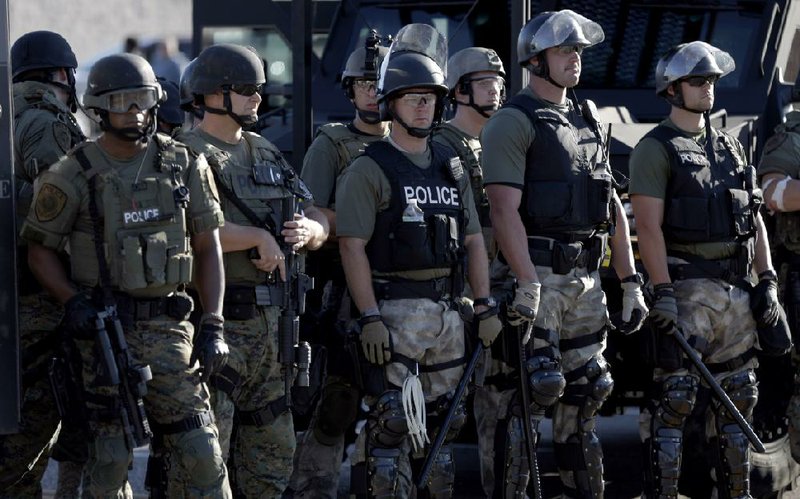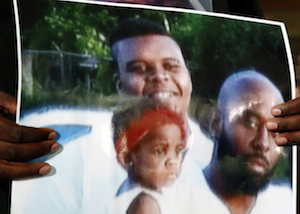Jet-black rifles leveled at unarmed citizens and mine-resistant vehicles once used to patrol the roadways of Iraq and Afghanistan rumble through small-town America. These are scenes playing out in Ferguson, Mo., which has been racked by protests since the fatal shooting Saturday of an unarmed 18-year-old named Michael Brown.
RELATED ARTICLE
http://www.arkansas…">Missouri goes in to run town torn by killing
The police response has appeared to be not only heavy-handed but also out of step with the most effective ways for law enforcement and military personnel to respond to demonstrations, war veterans say.
"You see the police are standing on line with bulletproof vests and rifles pointed at people's chests," said Jason Fritz, a former Army officer and an international policing operations analyst. "That's not controlling the crowd, that's intimidating them."
The protests in Ferguson began a day after Brown was killed, when a prayer vigil for the slain teen turned into an evening of looting.
Scriven King, a 10-year veteran of the U.S. Air Force's law enforcement component and a Special Weapons and Tactics officer, attributed the initial spasm of violence to a lack of leadership and mismanagement of public perception on the Ferguson Police Department's behalf.
"The first thing that went wrong was when the police showed up with K-9 units," King said. "The dogs played on racist imagery ... and [the department] wasn't cognizant of the imagery."
King added that, instead of de-escalating the situation on the second day, the police responded with armored vehicles and SWAT officers wearing bullet-resistant vests and military-grade rifles.
"We went through some pretty bad areas of Afghanistan, but we didn't wear that much gear," said Kyle Dykstra, an Army veteran and former security officer for the State Department. Dykstra specifically pointed out the bullet-resistant armor that the officers were wearing around their shoulders. It's known as "Deltoid" armor.
Fritz said the police also were using unnecessary weapons.
"I can't think of a [protest] situation where the use of M4 [rifles] are merited," he said. "I don't see it as a viable tactic in any scenario."
Ferguson police have defended their handling of the protests and said some demonstrators have been trying to "co-opt" peaceful protests. But while the Ferguson and St. Louis County police departments may have made their presence felt in the streets, they have made only limited use of social media.
"They've kept people in an information black hole," King said, mentioning that their decision not to share details about operations more widely has made the situation worse.
"There has not been a dialogue about the tactical situation the officers faced," he said, referring to the fact that there might have been a reason that caused the officers to respond with such heavy equipment. "There could have been threats to the officers, but that information has not been shared to the public."
As the violence continued to escalate over the course of the week, King said, Ferguson police also increased tensions by allowing individual officers to engage with protesters.
"Officers were calling the protesters 'animals,'" King said. "I can't imagine a military unit would do that in any scenario."
King added that if it were a military unit in a similar situation there would be a public affairs officer or civil affairs engagement team that would help bridge the gap between the riot control elements and the general population.
"I would hate to call the Ferguson response a military one," he said. "Because it isn't, it's an aberration."
A Section on 08/15/2014

